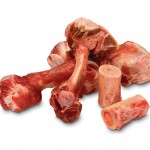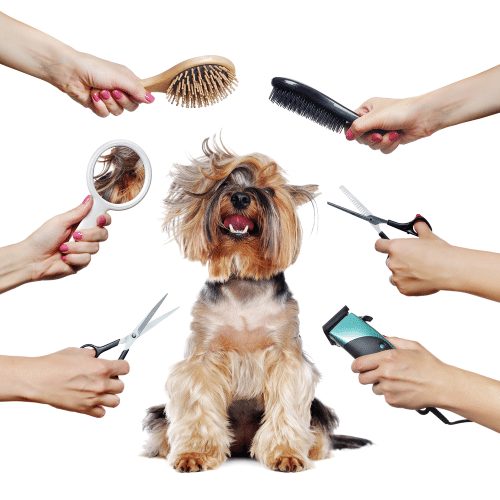Have you taken a good look at your pup’s poop recently? It may not be at the top of your to-do list and certainly isn’t on your WANT to-do list. However, while cleaning up after your pet, you’re going to get up close and personal with it on a daily basis. And, as it’s an excellent indicator of health, you might as well keep an eye on it. In fact, it’s a bit remarkable just how much your dog’s daily poo (or two) has to tell you.
Truth be told, after two years spent cleaning kennels at a veterinarian’s office, on top of a lifetime of living with and fostering pets, it’s become abundantly clear that poop comes in all sizes, shapes and colors. If you’re looking for tips on what’s normal and what’s not, here’s a quick and dirty guide to decoding your pet’s posterior pop’ems.
Color is Key
This one’s fairly simple. Chocolate brown = good. Other colors are questionable. But don’t panic yet. It’s normal for a little bit of variance in color day to day, depending on what your dog ate.
However, if you notice a sudden change or an ongoing odd color, you’ll want to check in with your veterinarian.
Below are stool colors that may warrant a trip to the veterinarian’s office ASAP:
Red: Bright red or anything that’s obviously blood is a bad sign. Red blood means your pet has blood in his lower GI tract. One thing to note: If it’s a uniform dull red, without streaks or fluid, it’s possible that it’s from food coloring. Lower quality pet food brands sometimes use red dye to make their meals look more palatable for humans. Trust me. Your dog doesn’t care what his food looks like. So save yourself a heart attack by avoiding food and treats that have dye and other artificial ingredients in them.
Black: Tarry black can be caused by internal bleeding in the upper portion of the GI tract. It can be a symptom of a host of scary problems, such as ulcers, stomach or esophagus tumors, infection, drug toxicity, kidney failure, trauma or possibly a foreign body in the gastrointestinal system. The key is not to rely on Google for a diagnosis. Get your dog to a veterinarian immediately. If you want to sound uber-intelligent, tell them your dog has melena. That’s the scientific term for black, tarry feces.
Yellow, orange or clay-colored: Occasionally your dog’s poop will just be yellowish. You might have nothing to worry about if it’s like this one time. However, persistently yellow, with no recent changes in diet, may mean that there’s a liver, gallbladder or pancreas problem. Sometimes a bile obstruction can cause this too. Greasy, foul-smelling (fouler than usual!) yellow poop could also indicate your pet isn’t absorbing food very well.
White: There’s a chance with extremely light-colored stool like this that your dog could have pancreas or liver problems. One caveat: If you find white droppings in your yard from several days ago, that’s just moldy poop. Nothing to worry about there – except you may want to scoop more frequently.
Polka dot: This one almost sounds exciting, right?! Unfortunately, the much less fun answer is that white dots (i.e., wiggling spaghetti-like strands or what looks like rice in your pet’s poop) can be the result of worms. Take a recent stool sample in a sealed container so they can diagnose and treat and problem they find. However, note that many worms are not visible to the naked eye, so don’t rely on sight alone if you suspect your dog has parasites.
If you notice a new to you color that’s not covered above (I’m looking at you, plaid), congratulations on having a really weird dog. Weird or not, a veterinarian’s visit is in order to rule out anything dangerous.
Aim for Consistency and Good Form
There’s a bit of room for creativity here. The secret is knowing your pet’s poop well enough to tell when something is off.
- A well-formed, segmented log that’s doughy in consistency is ideal. However, if you’re walking your dog and he’s trying to defecate while continuing with his walk, you may not get that A+ log, so cut him some slack.
- Small balls, extremely firm feces or pebble-shaped poomay mean your dog is dehydrated. If you find you can’t squish it easily in the poop bag, it’s too firm. This is especially common in dogs with kidney disease or older, arthritic dogs. If this is the case, take your pooch to the veterinarian for proper diagnosis and treatment.
- No shape at all (i.e. diarrhea) typically indicates an intestinal problem. It could be as simple as something he ate or it could be an infection, parasite or food intolerance. Almost every foster dog I’ve worked with shows up with runny poop. It usually turns out to be worms, but also seems to be caused from the stress of being in a new place and eating new foods. If you notice your pet is doing great in all other areas of his life (eating, drinking, normal play, etc.), you can wait a day or two for the stool to firm up a bit. If, after he goes a couple times, it doesn’t, get it checked out by your veterinarian.
Let’s Talk Size and Frequency
Obviously this is going to be dependent on the size of your dog. While a Chihuahua may have poop so little it’s almost cute, a Great Dane can leave behind a pile that nearly requires a forklift to scoop. Again, what’s important here is steady output.
If your pet’s stool volume suddenly decreases, it could mean he’s sick and not eating as much as usual. Or it could indicate a partial GI obstruction.
Seeing a sudden increase in stool volume? Food may be the culprit, especially if you just switched to a new brand. High-quality food brands don’t use unnecessary fillers, which means less waste. Literally. If you’re feeding a lower-quality food with fillers (non-digestible products), it may look like their bowl is full but you’ll be seeing most of that “food” again in the form of larger piles of poop.
Regarding frequency, most dogs tend to go one to two times a day. However, if your pooch normally goes three to four times daily, it’s just a sign that he’s got a healthy digestion. Less than once a day could mean your pup is constipated, needs to drink more water or hasn’t been eating enough. As long as he’s fairly consistent, not straining and seems comfortable with the amount that he goes, it’s likely your dog is fine. To help your pet avoid dehydration, always provide access to fresh, clean water.
Don’t Forget Scent and Content
They say what goes in, must come out, but that bowl of dog food certainly looks and smells a lot different on the other end. Essentially, poop is what’s left of food once your dog’s body has absorbed all needed nutrients from it. That’s why a good, premium diet is so essential. Not only will you see less waste overall; with a high-quality diet, you’ll notice more consistent, healthier stools on a daily basis. Bonus, it typically has less odor.
Although speaking of odor, well…of course poop smells. Luckily, the reason why is fairly harmless. It’s simply because it contains undigested food mixed with bacteria, mucus and dead cells. Basically the things your dog’s body doesn’t need anymore. Obviously it’s going to stink but you needn’t worry unless the smell is exceptionally rank. If this happens more than a few times, get your pet checked out by his veterinarian.
Happy Tails to You
The moral of this story is that your pet’s poop is a good indicator of his general health. And, many problems can be avoided by keeping a close eye on what your pooch eats. By sticking with a regular diet of top-quality food and treats – and ensuring that the ingredients come from trustworthy sources – more often than not, you’ll be rewarded with nice medium brown, perfectly formed poops. The kind that are nearly a joy to scoop…almost. Plus, you now have something interesting to analyze next time you accidentally step in a pile of errant dog poop.
Source:
Petco blog.










